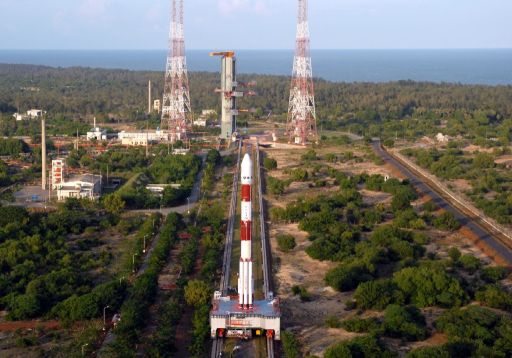In what is being touted as the 'Asian Space Race' ISRO's Chandrayaan-1 lifted off without a hitch for a two (2) year jaunt around the Moon. Launching at 0052 GMT into an overcast sky, Chandrayaan-1 reached its orbit in nineteen (19) minutes. It will be taking the leisurely route to lunar orbit and is expected to arrive in fifteen (15) days. Chandrayaan-1 is primarily a mapping mission, with instruments from several nations aboard, including two from NASA. The Moon Mineralogy Mapper will assess mineral resources, and the Miniature Synthetic Aperture Radar, or Mini-SAR, will map the polar regions and look for ice deposits. This launch comes on the heels of rival China's first spacewalk. Also in the Asian space race are Japan and South Korea. China, Japan, India, Russia and the US are the only countries with active plans for a manned lunar landing.
Mini-SAR is particularly important for NASA's future plans. NASA has announced that it plans to place America's first lunar outpost near the poles to take advantage of two rare resources in the Moon - ice and constant sunlight. The Moon has a minimal atmosphere and any volatiles, water included, boil off into space. At the poles, deep crater floor never receive any sunlight and because of that, the temperatures have remained at cryogenic temperatures, allowing ice to remain in the shadows. As a direct consequence of having crater floors, in permanent shadow, there are peaks of eternal light at the poles. These mountains have a constant view of the sun, allowing them to bypass the bi-weekly day-night cycle of the moon and use constant solar power. Constant solar power is not a viable option for outposts anywhere else on the Moon because during the two (2) week long night, outposts would have to switch to battery power stored during the day or some other form of power like nuclear. Or even lunar thorium powered reactors.
Also getting into the satellite launching business is Brazil, with their own domestic launcher, the VLS-1, developed by the Brazilian Space Agency and Air Force with Russian help.






0 comments:
Post a Comment